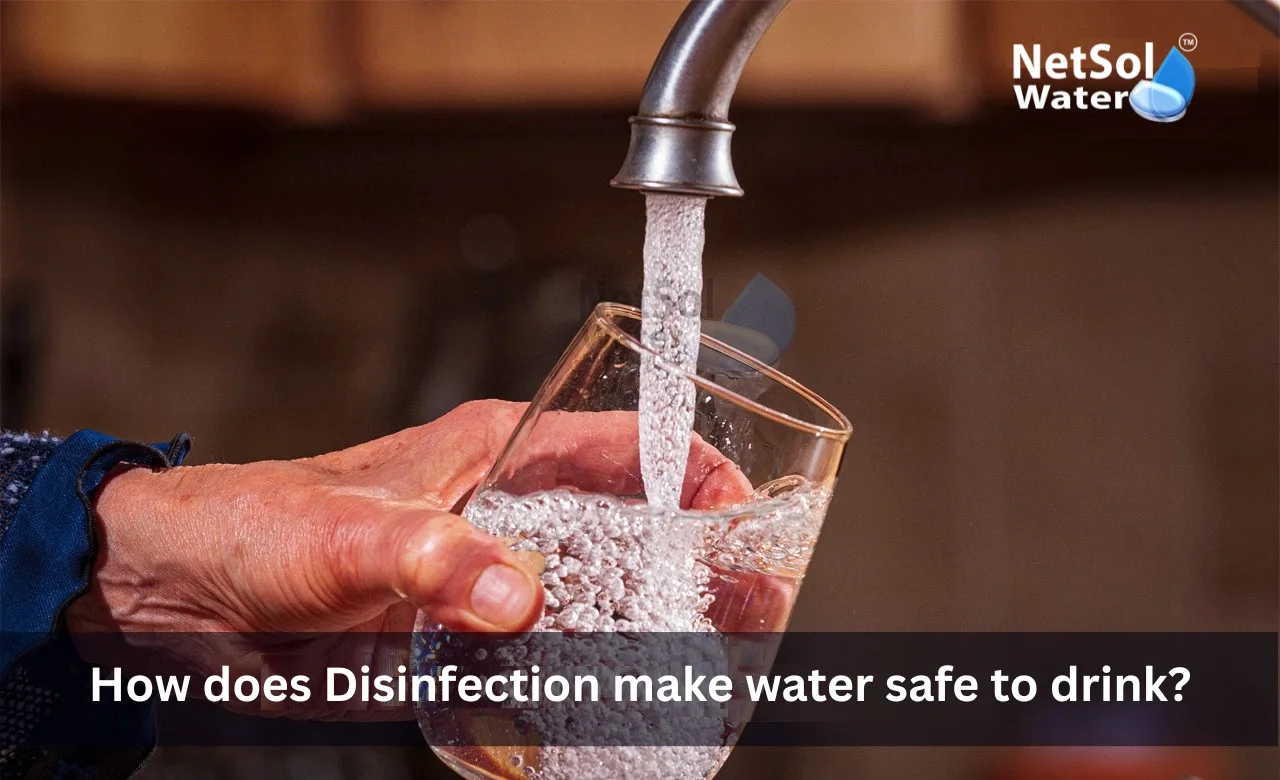
How does Disinfection make water safe to drink?
Making water safe to drink matters for every person and every home. In many towns and cities people depend on treated water for daily life. Netsol Water makes plants that remove germs and make water clear and clean. Disinfection forms a key part of these plants. Disinfection stops disease and it helps people stay healthy.
How Disinfection Removes Harmful Microorganisms
Disinfection stops tiny living things in water that can cause sickness. This step comes after removing sand and dirt. Disinfection kills or inactivates bacteria, viruses, and protozoa. Let us have a look on some common approaches.
Chlorination
Chlorination acts by breaking down the structure of microorganisms. Water treatment teams add a measured amount of chlorine or a chlorine compound to the water. The chemical moves through the water and it touches any bacteria or virus. This contact causes the germs to lose their ability to grow. Treatment teams monitor the contact time and the chemical dose. They set the dose to match the water quality and the pipe length to the users. Chlorine also leaves a small amount that keeps killing germs while water moves in pipes. This leftover helps stop new germs from entering the system before the water reaches the tap. Chlorination works well for most microbes. Operators test the water at regular steps to make sure the chlorine level stays safe for people. If levels drop they add more. If levels rise they reduce the dose. This control keeps the water safe and it keeps the taste and smell within normal limits.
Filtration with Disinfection
Filtration removes particles and many types of germs that cling to those particles. Sand filters membrane filters and other media trap the larger bits. After filtration the water looks clear. Clear water helps disinfection work better. Let us have a look on the role of membranes and follow up disinfection. Membrane filters such as ultrafiltration and nanofiltration act as a physical barrier. These membranes keep bacteria and protozoa out of the treated stream. They also reduce the load on chemical disinfectants. After the membrane step teams add a small disinfectant dose to ensure that any tiny virus left will not remain active. This two step approach gives higher safety. It also reduces the need for high chemical doses. Operators design the system so the membranes get cleaned and checked. This care keeps pores open and maintains flow. When operators follow this plan the final water meets safety targets and it tastes acceptable at the tap.
Methods and Their Role in Making Water Safe to Drink
Many modern plants use more than one disinfection method to reach the safe standard. Each method has a strength and a limit. Let us have a look on some of the widely used methods.
UV Disinfection
UV disinfection uses light to stop microbes from replicating. Water flows under lamps that give ultraviolet light at a set wavelength. This light reaches into the cell and it damages the genetic material of bacteria and viruses. When this damage becomes large the microbe cannot reproduce and it cannot cause an infection. UV works without adding chemicals so it does not change the water taste. UV works best after the water clears of particles. Operators place the lamps in a chamber that gives even exposure to the whole water stream. Teams check lamp intensity and they replace lamps on a schedule. They also clean the sleeve that holds the lamp. Good maintenance keeps the system effective. UV gives quick action and it is safe for people when done correctly. For long term safety plants may still keep a low chemical disinfectant in the network to guard against re contamination in pipes.
Ozone Disinfection
Ozone offers a strong chemical option for disinfection. Plants make ozone on site from air and then they mix it into the water. Ozone reacts very fast and it destroys many kinds of microbes and some chemical traces. This method leaves no long lasting chemical in the water. Teams must manage ozone carefully because it breaks down quickly and it can harm equipment at high levels. Many modern plants use ozone before filtration to reduce organic load and to lessen the work for follow up disinfection. This step improves the overall removal of bad tastes and smells. Ozone works well with other methods and it helps high quality systems reach strict safety targets. Operators keep sensors and they run regular checks so the process runs in a safe range for people and for pipes.
Read some interesting information for Sewage Treatment Plant Manufacturers
Conclusion
Water that meets the standard for Water Safe to Drink comes from systems that use multiple checks and proven disinfection steps. Each method adds a layer of protection. Chlorination provides lasting protection in the network. Filtration and membranes remove particles and lower the chemical need. UV and ozone give chemical free or strong chemical options as needed. Netsol Water is the leading partner to design install and run these systems in Noida and nearby areas.
Contact Netsol Water at:
Phone: +91-9650608473
Email: enquiry@netsolwater.com
